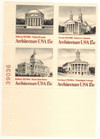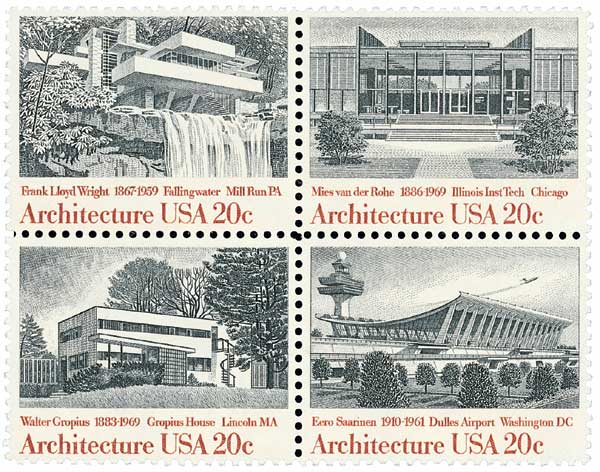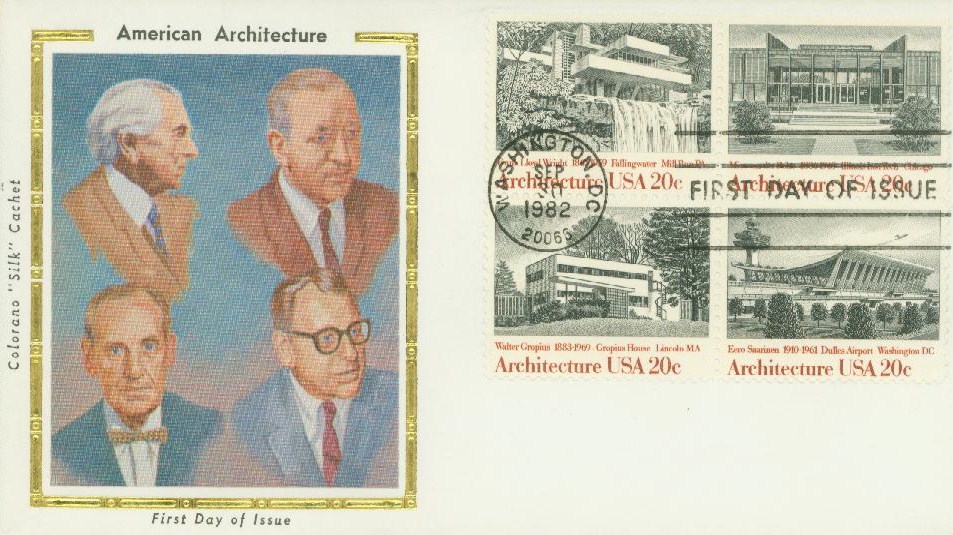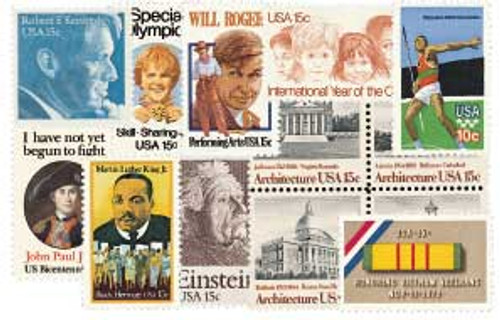
# 1779-82 - 1979 15c American Architecture
1979 15¢ American Architecture
City: Kansas City, Missouri
Quantity: 164,793,600
American Architecture Series
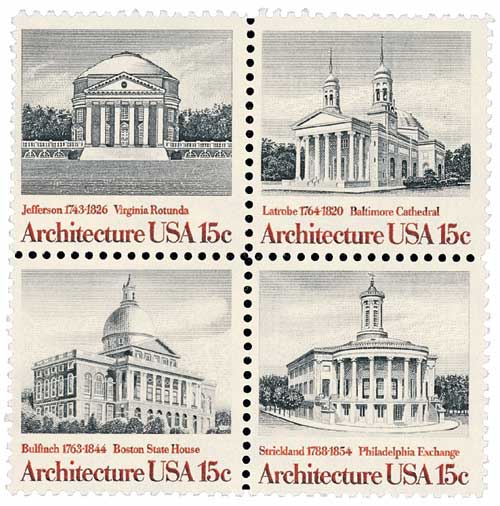
On June 4, 1979, the USPS issued the first block of four stamps in the American Architecture Series.
The series was created to honor the evolution of American architecture over the last two centuries. Walter D Richards designed all of the stamps and each includes the name of the architect, their birth and death years, and the name of the building.
The first stamps in the series were issued on June 4, 1979, in Kansas City, Missouri at the National Convention of American Institute of Architects. The buildings pictured on these stamps are generally from the period of Classic Revival of the Post-Colonial Period to the Greek Revival, which lasted until about 1860.
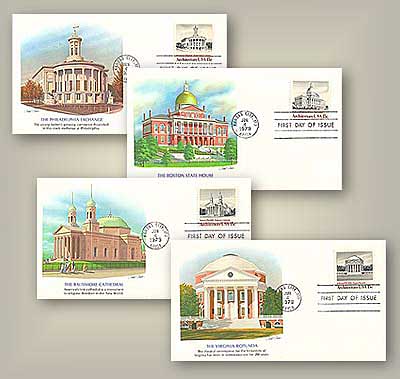
Each building was selected for its enduring beauty, strength, and usefulness. Pictured are the William Strickland’s Philadelphia Exchange, Charles Bulfinch’s Boston State House, Benjamin Henry Latrobe’s Baltimore Cathedral, and the Thomas Jefferson’s Virginia Rotunda.
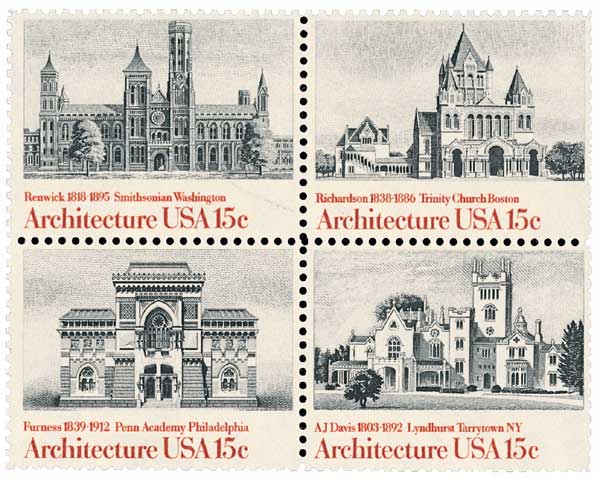
The second block of four stamps was issued on October 9, 1980, at the convention of the National Trust for Historical Preservation in New York, New York. The buildings honored in this block were constructed during the 19th century, an era of Gothic Revival, when buildings took inspiration from the Middle Ages as well as Victorian architecture.
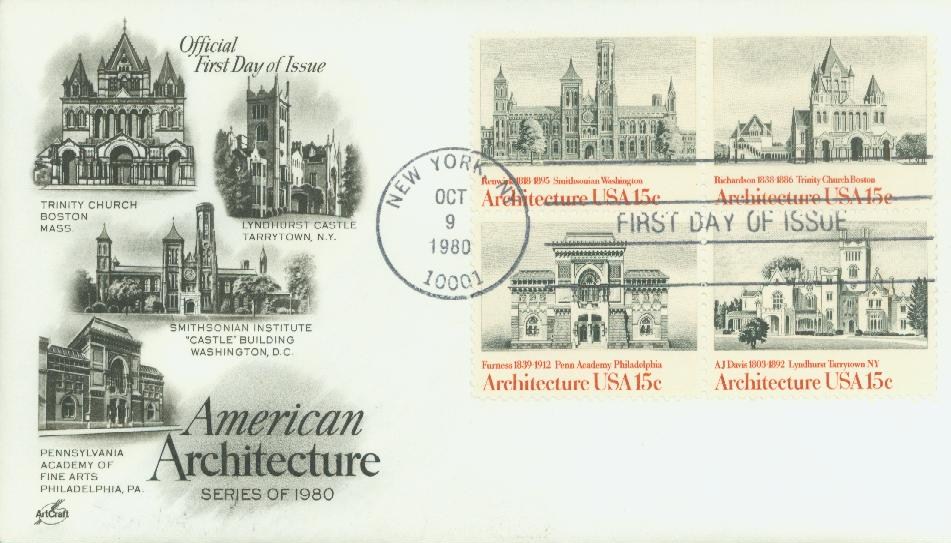
The stamps illustrate the Smithsonian Institution by James Renwick, the Trinity Church by Henry Richardson, the Pennsylvania Academy of Fine Arts by Frank Furness, and the Lyndhurst by Alexander J. Davis.

The third block in the series was issued on August 28, 1981, at the National Building Museum in Washington, DC. The buildings in this group date from the late 1800s to the early 1900s, a period when architects stopped sticking to particular styles and began exploring new directions. The eclectic architecture of this era often took inspiration from any styles or buildings that came before it, and might even combine elements from multiple styles into one building.
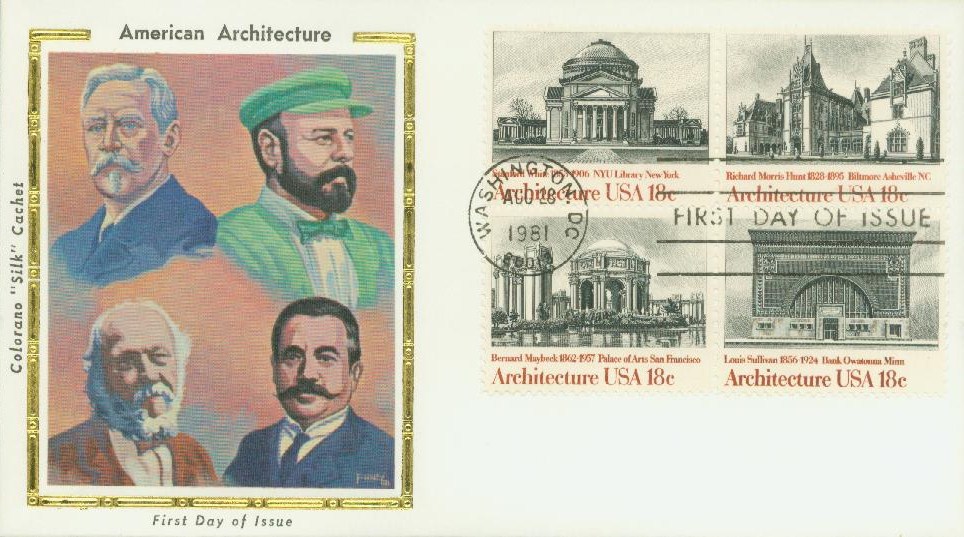
The stamps show the New York University Library by Stanford White, the Biltmore House by Richard Morris Hunt, the Palace of the Arts by Bernard Maybeck and the National Farmer’s Bank by Louis Sullivan.
1979 15¢ American Architecture
City: Kansas City, Missouri
Quantity: 164,793,600
American Architecture Series

On June 4, 1979, the USPS issued the first block of four stamps in the American Architecture Series.
The series was created to honor the evolution of American architecture over the last two centuries. Walter D Richards designed all of the stamps and each includes the name of the architect, their birth and death years, and the name of the building.
The first stamps in the series were issued on June 4, 1979, in Kansas City, Missouri at the National Convention of American Institute of Architects. The buildings pictured on these stamps are generally from the period of Classic Revival of the Post-Colonial Period to the Greek Revival, which lasted until about 1860.

Each building was selected for its enduring beauty, strength, and usefulness. Pictured are the William Strickland’s Philadelphia Exchange, Charles Bulfinch’s Boston State House, Benjamin Henry Latrobe’s Baltimore Cathedral, and the Thomas Jefferson’s Virginia Rotunda.

The second block of four stamps was issued on October 9, 1980, at the convention of the National Trust for Historical Preservation in New York, New York. The buildings honored in this block were constructed during the 19th century, an era of Gothic Revival, when buildings took inspiration from the Middle Ages as well as Victorian architecture.

The stamps illustrate the Smithsonian Institution by James Renwick, the Trinity Church by Henry Richardson, the Pennsylvania Academy of Fine Arts by Frank Furness, and the Lyndhurst by Alexander J. Davis.

The third block in the series was issued on August 28, 1981, at the National Building Museum in Washington, DC. The buildings in this group date from the late 1800s to the early 1900s, a period when architects stopped sticking to particular styles and began exploring new directions. The eclectic architecture of this era often took inspiration from any styles or buildings that came before it, and might even combine elements from multiple styles into one building.

The stamps show the New York University Library by Stanford White, the Biltmore House by Richard Morris Hunt, the Palace of the Arts by Bernard Maybeck and the National Farmer’s Bank by Louis Sullivan.








